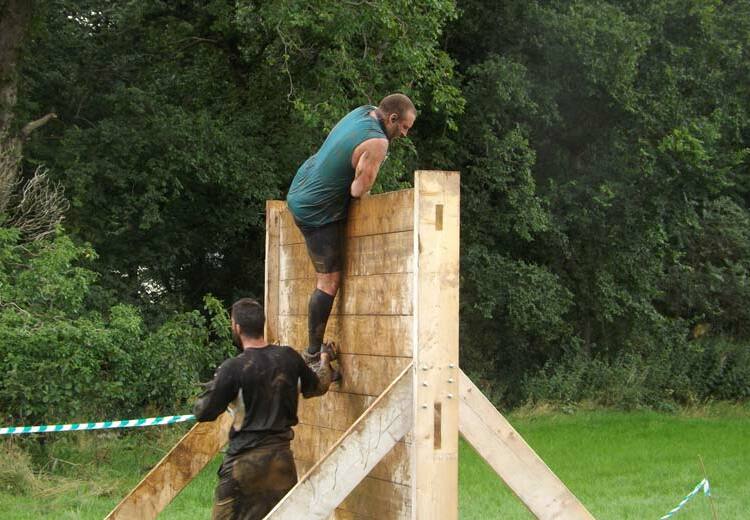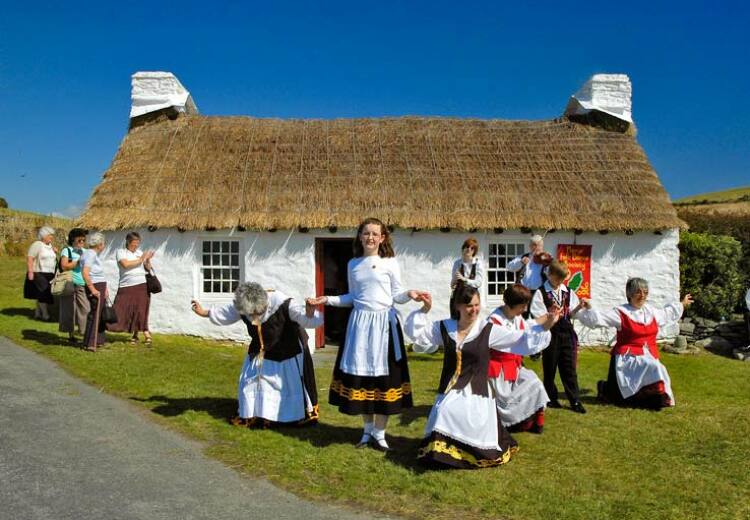Side by side in a quiet, leafy corner of the graveyard surrounding Malew church lie two casualties of the First World War. Their graves are marked by the white Portland stone memorials which are familiar to anyone who has seen British war cemeteries the world around. The graves are maintained by the Commonwealth War Graves Commission which was set up as the Imperial War Graves Commission in 1917 to commemorate all of the war dead of the British Commonwealth individually and equally. The Commission cares for memorials to over 1.7 million casualties worldwide.
The two casualties are both sailors, members of the Merchant Marine as it was then known, and both died as a result of their ships being torpedoed by enemy submarines. One is unidentified although he is known to have died when the collier SS Dalewood was sunk on 26th February 1918. Rather than bearing his name his gravestone simply says “Known unto God”. The second casualty died in the sinking of the SS Sea Gull on 16th March 1918 off Anglesey whilst en route from Le Havre to Liverpool. He was Alfred Dunthorne from East London, a Fireman in the ship’s engine room. The Imperial War Graves Commission erected their gravestones in the 1920s and other than being cleaned occasionally, they remained untouched and rarely noticed until 2012 when Ivor Ramsden, Director of the Manx Aviation and Military Museum, visited them. Ivor takes up the story:
“I was rather surprised to see that Fireman Dunthorne’s gravestone was marked with the badge of the King’s African Rifles, which is an Army unit, rather than that of the Mercantile Marine so I contacted the Commonwealth War Graves Commission (CWGC) to enquire whether this might be an error. They asked me to send them a photograph of the gravestone and on receiving it they acknowledged that it bore the wrong badge. They advised me that the error would be corrected when the stone was replaced at some time in the future due to wear and tear. Apart from some algal growth the stone was in pristine condition and I realised that it would be a very long time before it would be replaced so I contacted the CWGC again to enquire whether we could raise funds on the Island to pay for its replacement and I was extremely pleased to be advised that they had reconsidered the matter and had arranged for a new headstone to be produced. They said that this could take up to 18 months but I was happy that at last Fireman Dunthorne’s memorial would bear the badge of the Mercantile Marine. At the time I wrote: “I don’t suppose he is bothered, but it means a lot to me.”
“Time passed and I occasionally called in at the graveyard to pay my respects to Fireman Dunthorne and the unknown man but the gravestone remained unchanged. On 10th April this year I went to the interment of Manx Regiment veteran Jack Connor in Malew churchyard. Afterwards I went to the two seamen’s graves and I was very moved to see that Fireman Dunthorne’s gravestone had been replaced so that after almost a century it correctly bore the badge of the Merchant Marine.
“I feel rather humble that this came about as a result of my pointing out the error but also proud that in these days of austerity the CWGC continues its work quietly, although largely unacknowledged, ensuring that our war dead are commemorated in a fitting way. For all that they do I offer them my sincere thanks.”
Reverend James McGowan, Vicar of Malew, expressed his appreciation for the work of the Commission:
“I and the Malew Burial Authority acknowledge the ongoing efforts of the Commonwealth War Graves Commission who regularly visit our churchyards to clean, inspect and repair the memorials to those who died in the service of their country. Their efforts often go unseen and unnoticed; yet CWGC continue that pledge to uphold the commitment to faithfully ‘remember them’.”
The two men who are buried in Malew churchyard are not the only casualties of WW1 to lie in the Island’s cemeteries. Many bodies were washed up on the Island’s shores; sadly many were unidentifiable but amongst those who were identified are three more men who also died in the sinking of the SS Sea Gull. This is sad enough in itself but what is more tragic is that two of them are brothers. These three men are buried in Rushen churchyard.
The Manx Aviation and Military Museum is preparing a large new exhibition on the Island’s role in the First World War which will include more information on the casualties who are buried here.
More information can be found here:
Manx Aviation & Miltary Museum: maps.org.im/museum
Commonwealth War Graves Commission: cwgc.org
Photo - Fireman Dunthorne’s new CWGC headstone.








